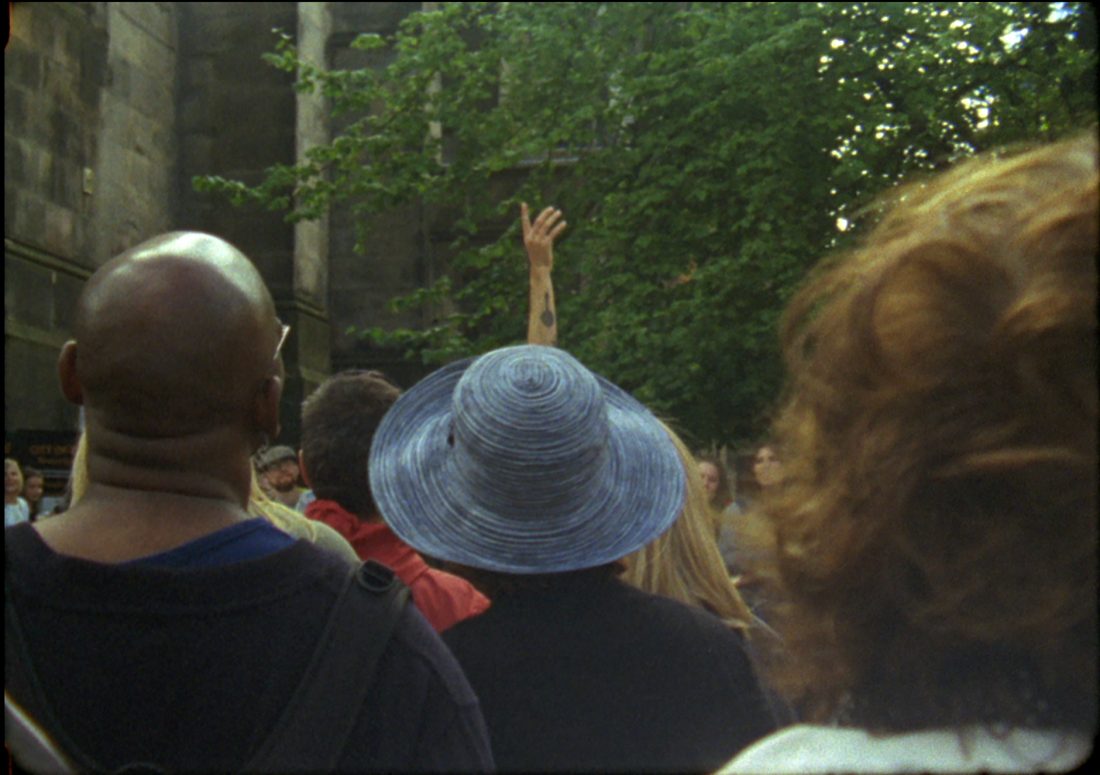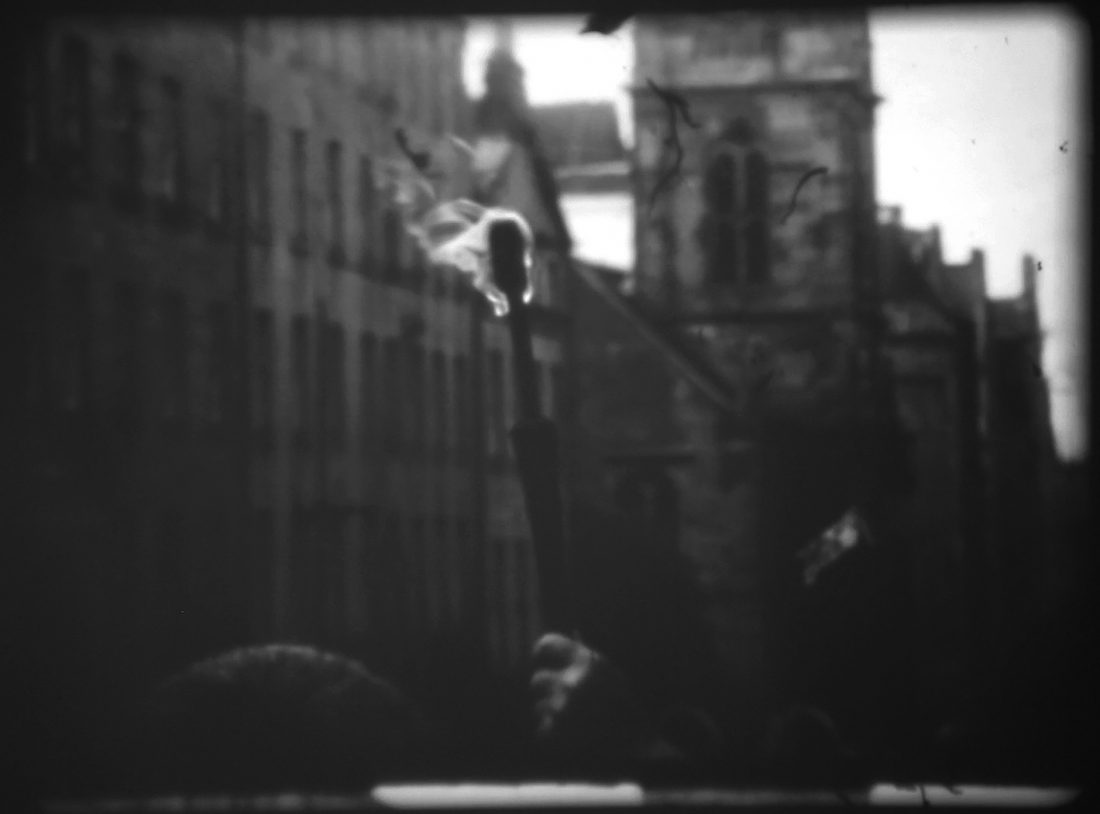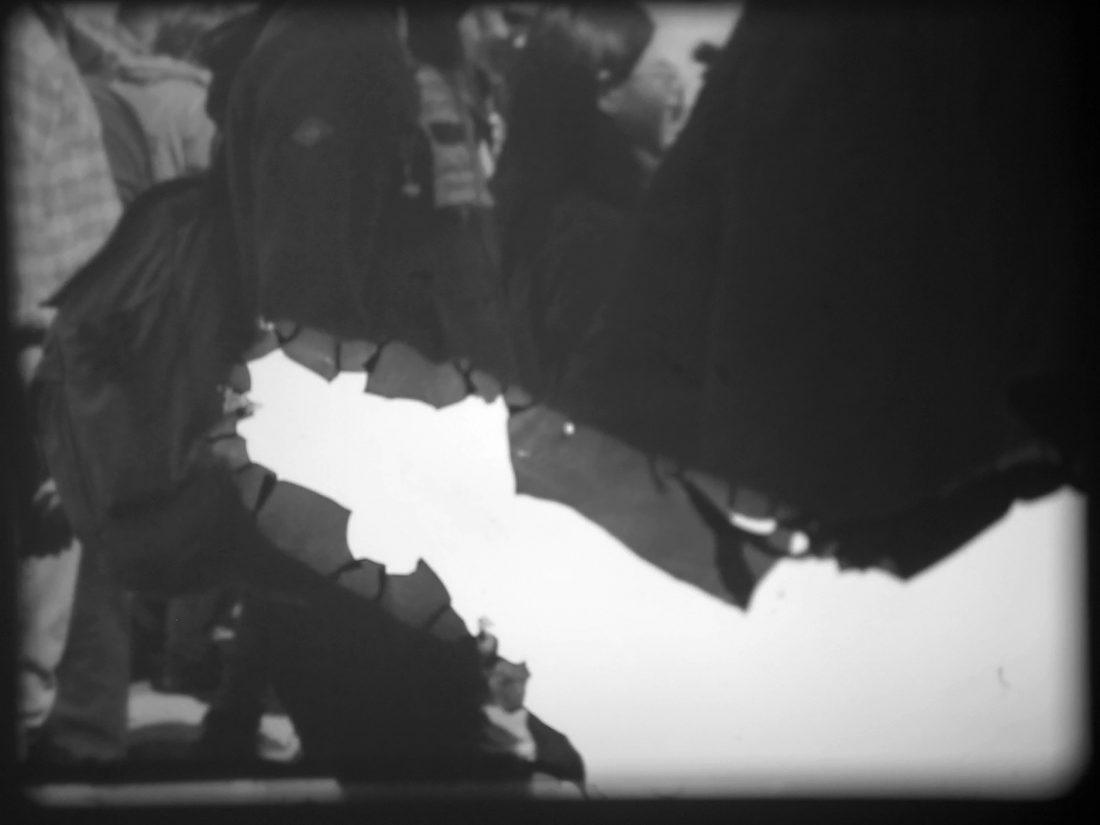I spent the first week of my residency at Stills observing and documenting the crowds that populate Edinburgh during the festival period.
I spent the first week of my residency at Stills observing and documenting the crowds that populate Edinburgh during the festival period.
All the while hanging on to the mental images evoked by EP Thompson’s essay Rough Music. Much of my time that week was spent on the Royal Mile. That street draws together several elements from Thompson’s essay, it is a space where parades and processions happen, where the public meet figures of power and where the law is enacted. The theorist Lisa Blackman has written extensively on crowd behaviours, describing how people become connected through muscular bonding; by sharing gestures in a unison of limbs, hands and feet, they begin to act as a mass. I looked for this physical mimicry in the bodies that flowed past the camera, but the spectators I observed in Edinburgh appear much more passive than the active and enlivened crowds of the 1800’s described by Thompson. The writer Elias Canetti describes the movement of crowds using symbols of fire, water, corn and sand. What I’ve been observing however is water with different currents. The passive bodies gathered in Edinburgh’s streets don’t have the focus and dynamism of collective action.

In my research I keep coming up against boundaries in time. Whilst in Edinburgh I spent time in the National Library and the National Records of Scotland, exploring historical documents such as the Kirk Records for accounts of crowds. These formal church documents are the main records kept on Scottish communities from the 16th Century onwards. At that time the church exerted power over every aspect of parishioner’s lives, so these records document the blurring of public and private life. According to Thompson this mixing of the public and the private also occurs in Rough Music rituals. In preparation for the week in Edinburgh I visited the Working Class Movement Library in Manchester to expand my research beyond Thompson’s essay. There I looked at alternative accounts of various public displays held by working class people. I read about riots triggered by moral transgressions within communities, the kind of communal self-policing that Thompson identified. And about collective responses to abuses of power by authorities – like the theft of the dead bodies of the poor in the 1800’s for dissection by medical scientists. In these acts it seemed important that working class people performed their rituals in public space, perhaps as a response to their being pushed into smaller and smaller sections of the city by developers and landowners. Patriarchy was another mobilising force for some of the mob acts described by Thompson. This sent me looking for a history of the female experience of crowds. My research so far has countered the idea that the dangerous crowd is a predominantly male space.
Exploring ambivalent spaces

A highlight of the residency has been the time spent in the dark room at Stills. In the time that it takes to shoot and process analogue film you gain a distance from your material – something I haven’t experienced in my recent digital work. I found parallels between the stages of the chemical photographic processes and the invisible stages of ‘crowd mind’ that Blackman identifies in her book Immaterial Bodies; gathering, submergence and contagion. The spreading of light on the film changes its form, one thing is taken over by the other. The skin of the film, like that of the body is an active agent for transmitting emotion between members of the crowd. When submerged in the activity of filming I always remain on the periphery. Looking through the camera, the technology I’m using distances me from the crowd. When I am filming I’ve tried different strategies to dissolve boundaries, or roughen surfaces in the image – losing information and becoming more porous in the process. I made binaural sound recordings of cheering crowds, trying to capture a sonic transition from celebration into harsher frequencies. One of the things that interested me the most about EP Thompson’s essay is the phrase Rough Music itself, and his account of the raw energy that can emerge in a collective gathering. I want to find a way to record evidence of the unpredictability of this energy, which can quickly flip between extremes of joy and volatility. The anonymity of the crowd is easily ruptured but for the time it exists it can be pervasive, the collective energy acts as a cloak. The corporeal collective body of an active crowd is missing from the situations that I’ve observed so far, and something I am looking to find in the second part of my residency.
